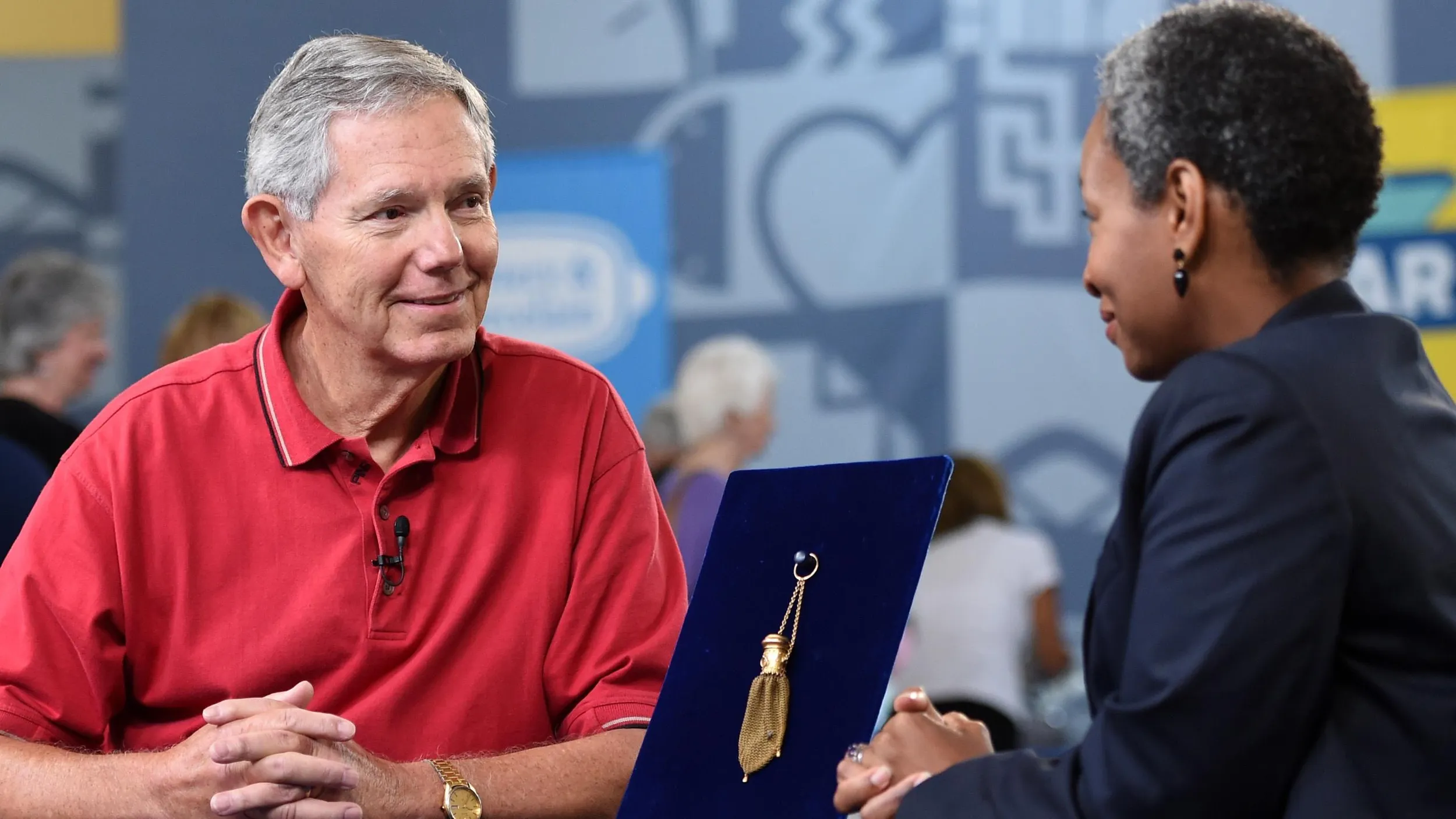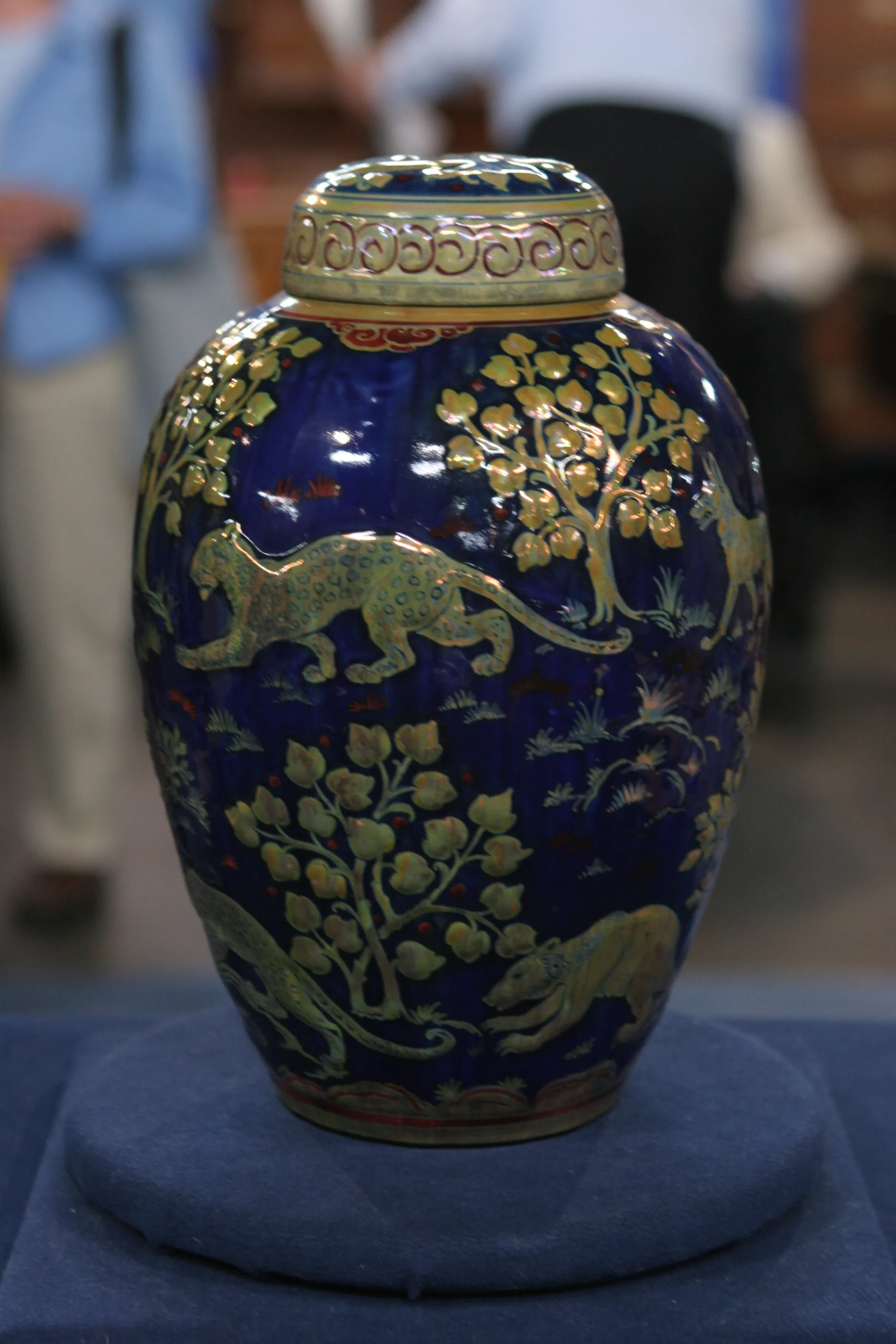GUEST: It's a lamp that I inherited from my family. I don't really know anything about it. The only thing I know about it is it was given to them from winter colonists that come to Aiken, South Carolina, over winter. Two lamps were given to them. One was a Tiffany lamp, and the other one was this lamp base with a Tiffany shade. And like I said, I inherited it from my father, and other than that, I don't know anything about it.
APPRAISER: And you had said there was a Tiffany shade with this? Where is that now?
GUEST: It's hanging in my house.
APPRAISER: Okay, and so what would you like to know about the lamp today?
GUEST: It's just an unusual base, but we've never really used it. I would just like to know something about it. I don't think it's a valuable base, but I don't really know anything about it. I just think it's something that came from the 1920s or 1930s.
APPRAISER: We know who made this lamp, and it's actually signed. Right here on one of the feet, I'll just tilt it back quickly, there's a little C within a lozenge.
GUEST: I did see that.
APPRAISER: And that mark is for Caldwell and Company, which is a lighting company that was based out of New York and was founded by a gentleman by the name of E.F. Caldwell. So the company was in business from 1895, and actually went out of business in 1959. But this lamp was made around 1915 to 1920, '25. They were also known for decorative metalwork as well, and they produced all sorts of lighting, all different styles. What's really interesting about this style is that it's got this wonderful green surface, which we call a verdigris. And it was basically treated and then it brought on this oxidization, very much that you'd see in sculptures or objects that have been left outside. So it's artificial, it's been added, but it's a wonderful verdigris surface. The design incorporates all sorts of things, so that there's a little bit of Etruscan, there's some Renaissance Revival, there's some Neoclassical. Many times, these bases were not sold with any types of shades, so you'd have an opportunity to incorporate any shade you wanted. Caldwell was very prolific. There are works by Caldwell in the White House. There are works by Caldwell in many famous institutions throughout the country and actually we see them around the world sometimes as well. So, after doing some research, we actually came up with some other examples that sold at auction, so it's a well known Caldwell model. If we were to see this come up for auction today, I would put an auction estimate of $2,000 to $3,000.
GUEST: Okay, all right, that's good to know.












